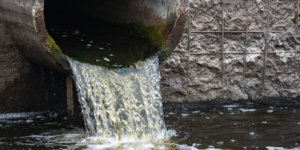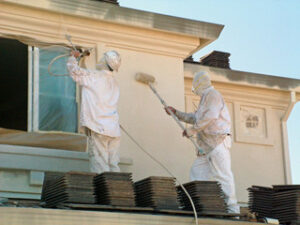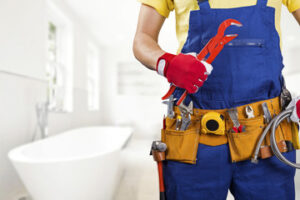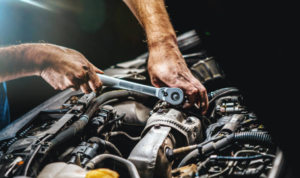A colonoscopy is a painless, effective test to detect colorectal cancer and other conditions. It’s the screening method of choice for colorectal cancer, which is the third leading cause of death in both men and women.
You’ll take a laxative formula to clean your bowels before the procedure, which begins 1 or 2 days ahead of time. You’ll also be given a sedative to make you relaxed and unconscious. Click https://www.drwesleyhigh.com/ to learn more.
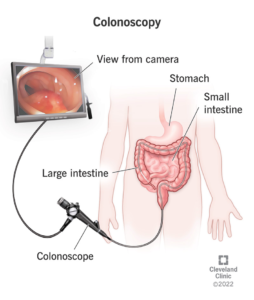
A colonoscopy is an exam of the large intestine (colon). A healthcare provider will use a long, flexible tube with a light and a tiny camera on the end of it to look at the inside of your colon. This procedure lets your healthcare provider check for problems such as polyps (abnormal growths) and colon cancer. It can also help find and remove small pieces of tissue for testing, such as a biopsy. It can also be used to treat conditions such as inflammatory bowel disease, Crohn’s disease, and ulcerative colitis.
The procedure is done in an outpatient setting or a hospital. You will need someone to drive you home afterward because it can take a full day for the anesthesia to wear off. After you check-in, a healthcare provider will put you in a hospital gown and have you lie on an examination table. They will put an IV in your arm to start delivering sedatives and pain medicine.
Before the procedure, you’ll need to adjust your diet. You’ll need to eat a low-fiber diet for two or three days, then switch to a liquid diet the night before and on the morning of your colonoscopy. You’ll need to drink only clear liquids, such as water, broth and tea or coffee without milk. If your doctor thinks you might have problems with bowel movement, they may advise you to take a laxative formula in pill or liquid form the night before and on the morning of your test.
As the doctor moves the colonoscope along, they will pump air into your colon to inflate it for better visibility. The video camera on the end of the colonoscope sends a live image to a monitor so your doctor can see what they are doing. They can also insert a small snare in the colonoscope to grab and remove small samples of tissue for testing, called biopsies. They can also remove abnormal growths, such as polyps.
A colonoscopy is important because it can detect and prevent problems in the lining of the large intestine, such as polyps and cancer. The test can also find a condition called diverticulosis, in which pockets form in the lining of the colon. This condition can lead to inflammation, blood in the stool and malnutrition if not treated.
Preparation for a colonoscopy
Many people get nervous when their doctor suggests that they have a colonoscopy, but it’s a very important screening procedure. It can help prevent colorectal cancer, the fourth leading cause of death in men and women. It can also find unusual growths (polyps) in the lining of the colon, and treat them or remove them before they turn into cancer.
A colonoscopy is a simple procedure performed in a hospital or clinic. After you check in, a nurse will install an IV line into your arm and start giving you sedatives and pain medication. You will be sedated for the entire procedure.
The gastroenterologist will insert a tube-like instrument called a colonoscope into the rectum. It’s about a half-inch wide and has a light and video camera on the tip. Air or water is pumped in through the tube to expand your colon if necessary, so that the gastroenterologist can see the lining of your large intestine. If polyps are discovered, they can be removed by the doctor using small tools attached to the end of the colonoscope.
One of the most common causes of bowel perforation during a colonoscopy is a shear injury caused by pushing and pulling on the colonic wall with the scope. This can be prevented by performing a thorough bowel prep and by using a variety of maneuvers during the procedure.
In addition, a gastroenterologist may use a tool on the tip of the colonoscope to remove any thickening of the colonic wall lining, which is sometimes called diverticulosis. A diverticula is a tiny outpouching in the lining of the colon that contains fecal matter, and can often be mistaken for polyps.
Before your colonoscopy, you should talk to your gastroenterologist about any health problems and all the medications, vitamins, and supplements that you take. You will also need to follow a special diet for a few days before the procedure. And you will need to arrange for a ride home afterward, since you will be too sleepy to drive after the sedative wears off. Many government and private insurance plans cover screening colonoscopies, but you should always check with your doctor about what your specific plan covers.
During a colonoscopy
The doctor inserts the colonoscope into the back passage of your bowel. It has a small light and camera at one end and is attached to a television monitor. The procedure is painless. You may feel some pressure or cramping, but this is normal and does not last long. You will be given sedation, either in pill or intravenous form.
You need to have an empty bowel for the test to work. You will be on a clear liquid diet the day before and the morning of the test. This includes water, broth, tea and coffee without milk, but no red drinks (like juices or soda) as these contain dye that can interfere with the test. Laxatives will also be taken, usually in pill or liquid form. You may also need to take an enema, usually the night before or morning of the procedure.
While the intestine is open, the doctor can view the entire large bowel and remove precancerous growths called polyps. These are found in 30% of colonoscopies and can be removed on sight. Colon polyps are one of the primary causes of colon cancer, so removing them is very important. The doctor can also use the colonoscope to biopsy any areas of suspicious tissue, or tattoo the mass for future surgical planning, or cauterize any bleeding vessels that may be present.
When the test is over, the doctor will remove the colonoscope, and you will be allowed to go home unless you need to stay in the hospital for some other reason. You will need a family member or friend to drive you, as the sedation will make you dizzy and uncoordinated.
It is common for some people to experience a little bit of blood after the colonoscopy, especially if a polyp or biopsy has been taken. This is usually a small amount and will stop on its own within a couple of days. Bleeding is rare, but if it persists or is heavy, talk to your doctor immediately as this can be a sign of a serious problem.
Post-colonoscopy care
Your gastroenterologist will recommend a diet that is easy for your colon to digest. This typically includes a limited amount of dairy plus soft foods like applesauce, eggs, soup, mashed potatoes, lean meat (without skin), and fried vegetables. Your doctor may also suggest avoiding certain foods that are high in fiber or fatty, as these can put extra stress on your colon and cause discomfort.
After the colonoscopy, you’ll need to drink plenty of fluids to avoid dehydration. It’s also important to talk with your gastroenterologist about when it is safe to resume eating normal food. This is based on many factors, including the results of your colonoscopy and your unique health situation.
Some people experience bloating and cramping after a colonoscopy. This is due to air being blown into the colon during the procedure, and it usually passes quickly. If you are experiencing pain or if the bloating is severe, it’s important to talk to your gastroenterologist about it.
A follow-up appointment will be scheduled if the GI doctor finds anything that needs further examination, or if polyps were removed during your colonoscopy. This can be with the GI specialist who performed your colonoscopy, or with your primary care physician.
Colonoscopies can save lives by detecting cancerous or precancerous polyps. In addition, they can help your gastroenterologist treat any abnormal tissue found during the exam. If you have any questions about the procedure or whether it’s right for you, speak with a gastroenterologist at Richmond University Medical Center.
Be sure to arrange for a ride home from your procedure, as the sedatives and anesthesia used during the colonoscopy can make you sleepy. It’s a good idea to take it easy the day after your colonoscopy, and don’t drive until you get clearance from your doctor. Also, be sure to schedule your next colonoscopy for the recommended time frame based on your risk factors. This way, you’ll have the best chance of preventing colorectal cancer or other conditions that can be detected early by colonoscopy. A colonoscopy can also detect and remove small tumors, which are often easier to treat than large ones.
